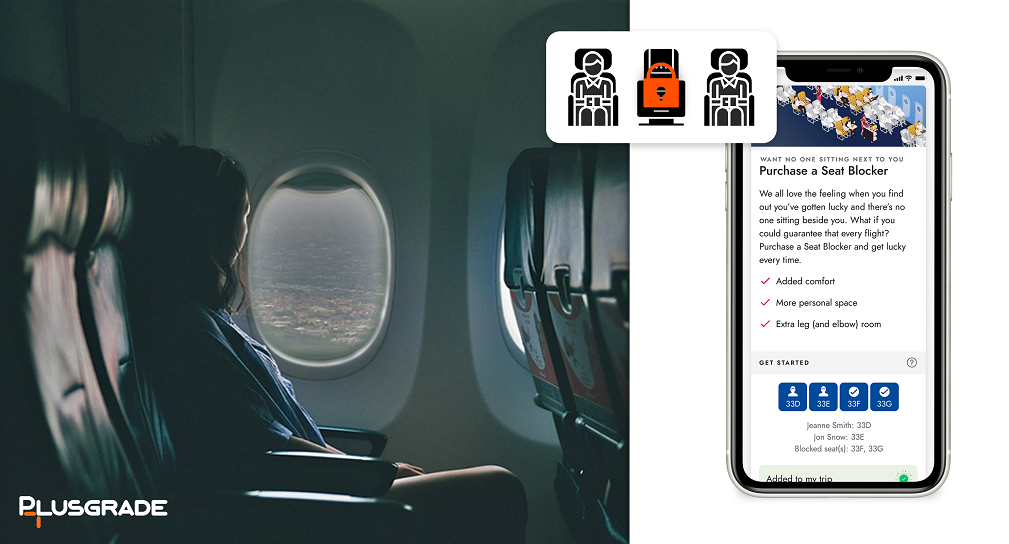Over the next month 7 airlines are launching the ability to buy multiple seats for yourself online as part of buying a ticket, and pick those seats off the seat map to guarantee you as much space as you wish.
This isn’t entirely a new idea, of course.
- You can buy an extra seat for yourself today on the major US airlines – but this isn’t something they promote. That seems like a big missed opportunity to generate extra revenue from the passengers they’ve got – at a time there are so few passengers – by delivering something everyone wants now which is more space.
- Up until 2007 United Airlines used to block middle seats for all elite frequent flyers, only filling them on full flights. They ended the benefit when planes were regularly full, because the number of seats having to be assigned at the gate was unwieldy. Back in March I argued this benefit should return.
- Frontier airlines had the brilliant idea of charging for blocked middle seats at a discount and they got filleted for it. But the idea of charging people who want extra seats on board to guarantee it for themselves is catching on, at least with some airlines in certain parts of the world.
- Airlines including Air New Zealand (“SkyCouch”) have offered multiple coach seats for sale as a bundle in the past.
Plusgrade, which is the provider behind airline ‘bidding for space available upgrade’ programs that several airlines run, announced their newest project Dynamic Seat Blocker“Dynamic Seat Blocker” today. This really seems like an opportunity for both airlines and passengers to benefit from the space on a plane.
- Airlines that already offer Plusgrade integrations (bidding for upgrades) can choose to “block the neighboring seat, the entire row, or request an upgrade to a higher service class.” (Existing Plusgrade airlines are promised 4 week implementation, while airlines they aren’t already working with – so where payment isn’t already integrated into the airline’s passenger service system – it’s an 8 week timeline.)
- Availability and pricing is managed dynamically based on load factor and inventory buckets available.
- This is all done through the existing purchase path, letting customers pick their seats (plural) off the flight’s seat map.

Plusgrade has been offering a more bare bones version of this, “Neighbor-Free Seat,” since 2017 and I’d never heard of it. It seems like it’s a product whose time has come. Airlines can’t ignore the revenue potential (in good times the list of revenue-generating projects is longer) and it’s what customers clearly want – recognizing that in the U.S. marketing teams will need to get out ahead of ‘the Frontier problem’ where they’re accused of ‘selling safety’ (no matter how unfair the charge).
Launch airlines using this include Etihad Airways, Oman Air and Royal Jordanian Airlines and Malaysia Airlines, Philippine Airlines, and two other carriers are expected to have this in place within 30 days.


One more reason to keep flying Southwest. Not necessarily my favorite airline, but they have the decency of not charging for the middle seat. If they can do it why the other carriers can’t?
@Liz, while of course I applaud Southwest and denounce other airlines’ decisions to pack people in so closely — Southwest has always been in a unique financial position, and it’s very likely the other airlines have done an analysis and figured their Sophie’s choice is either to sell full flights or go out of business. As consumers we continue to have choices, and I’ll continue to fly either airlines that block seats, or to drive, even if it’s across the country.
The slightly irrational negative that bugs me about paying for an extra seat next to me is that you’re also paying for a positive externality for whoever is on the other side of that empty seat who gets the same benefits that you’ve funded – unless you’re travelling with them of course. Would be nice if somehow they’d be able to match into rows those that are seeking the benefit to distribute the costs.
@Simon Judging from the link in the article, you can actually do what you’re describing – i.e., if you’re travelling with someone you can buy a third seat and all sit in that block to share in the benefits (or I guess two seats if you’re in a 4-seat block in the middle of a widebody?). I think the interface lets you pick your seats on a map, but I guess maybe it will vary by airline…
@Rob I think what Simon is saying is quite clever. They could offer you a choice of buying any extra seat as now. But then they could also show you open seats on the other side of a seat someone else already blocked (if any). You can buy one of these seats for the regular price plus maybe 60% of the cost of the blocked seat. They could then refund say 40% of the price the other person already paid for that seat.
That way, two travelers are happy because they bought extra space next to them, at only 60% of the usual cost, the airline is happy because they sold two seats for 100% and one seat for 120%, even though that seat doesn’t even need a meal or overhead space.
If this became popular the average sale price of a seat could go above 100%, planes would on average be less crowded (comparing to pre-pandemic days) and customers would be happier.